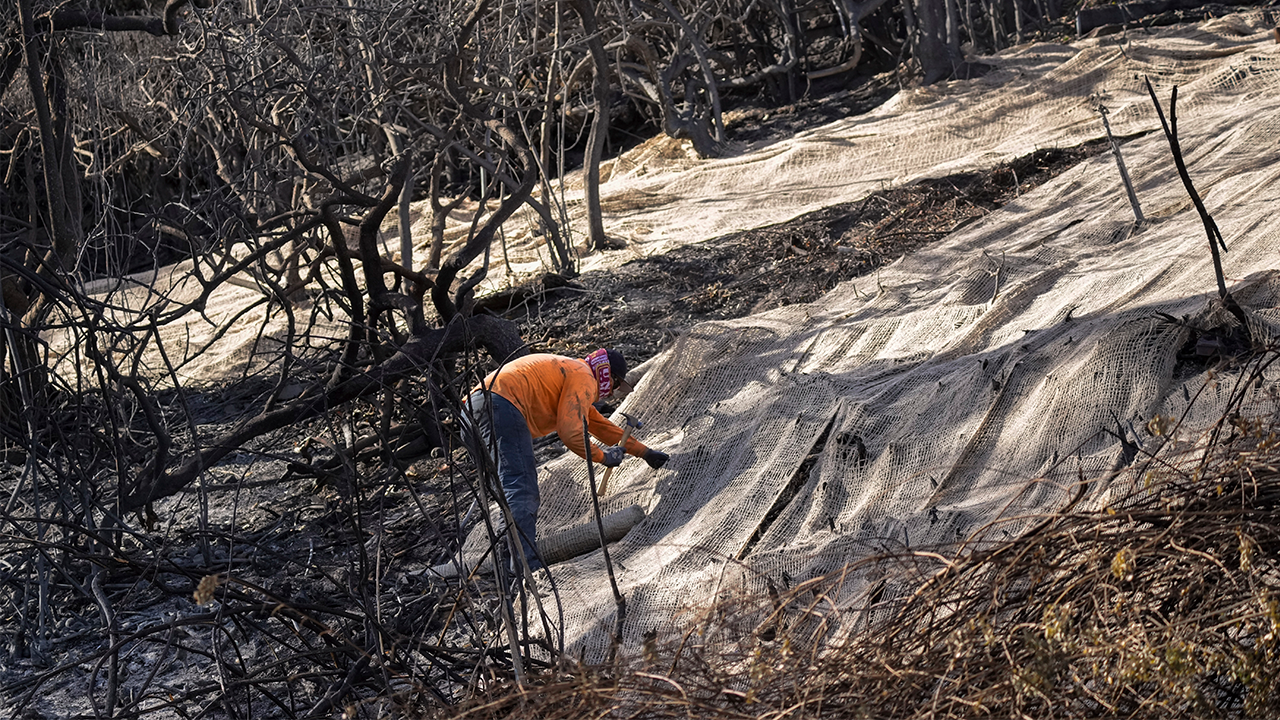California’s Rainfall: A Double-Edged Sword for Wildfire Recovery
California, a state often defined by its breathtaking landscapes and diverse ecosystems, has recently experienced a surge in rainfall. While this precipitation brings much-needed relief to firefighters battling the scourge of wildfires, it also introduces a host of environmental concerns. The paradox of California’s rainfall as a double-edged sword for wildfire recovery underscores the complex relationship between nature and human intervention. As the state grapples with the aftermath of devastating fires, the implications of rain on recovery efforts and environmental health are significant.
The Role of Rain in Wildfire Recovery
Rainfall plays a crucial role in the recovery process following wildfires. After a fire sweeps through an area, the landscape is often left barren, with vegetation destroyed and soil conditions altered. Here are the ways in which rainfall aids recovery:
- Soil Stabilization: Rain helps to moisten the soil, which can prevent erosion and promote the establishment of new plant life. In the absence of vegetation, soil can easily wash away, leading to further degradation of the ecosystem.
- Vegetation Regrowth: Rain provides the necessary moisture for seeds to germinate and for existing plants to recover. This is particularly vital in areas where native species have been affected.
- Habitat Restoration: As plants regrow, they provide food and shelter for wildlife, helping to restore balance to disrupted ecosystems.
However, while rain can rejuvenate burnt landscapes, it is essential to recognize that the benefits are not without complications.
Environmental Hazards: Toxic Ash and Runoff
The very rainfall that helps in recovery can also pose serious environmental threats. Following a wildfire, the landscape is often laden with residues, including toxic ash and debris. When rains come, these materials can be washed into waterways, leading to a phenomenon known as runoff. This runoff can have several negative impacts:
- Water Contamination: Toxic materials from burnt vegetation, household chemicals, and other pollutants can leach into streams, rivers, and lakes, threatening aquatic life and drinking water quality.
- Increased Sedimentation: Ash and debris can increase sedimentation in waterways, which can disrupt aquatic habitats and affect the health of fish populations.
- Public Health Concerns: Contaminated water sources can pose serious health risks to communities that rely on these sources for drinking water, recreation, and irrigation.
The challenge lies in balancing the benefits of rainfall for recovery with the potential for environmental hazards. This balance is critical for the health of ecosystems and the safety of communities.
Mitigation Strategies for Protecting Waterways
- Monitoring Water Quality: Regular testing of water sources in the aftermath of wildfires can help identify contamination early on, allowing for quicker response measures.
- Implementing Erosion Control Measures: Techniques such as straw wattles, silt fences, and replanting native vegetation can help stabilize the soil and reduce runoff.
- Public Awareness Campaigns: Educating local communities about the dangers of runoff and how to protect their water sources can foster a proactive approach to environmental health.
These strategies can help ensure that California’s recovery from wildfires is not overshadowed by the adverse effects of rainfall.
The Role of Community and Government in Recovery Efforts
In the wake of wildfires and subsequent rainfall, community involvement and government action are paramount. Collaborative efforts can lead to more effective recovery strategies:
- Community Engagement: Local residents can play a vital role in recovery by participating in restoration projects, such as tree planting and clean-up efforts.
- Government Support: State and federal agencies can provide resources and funding for recovery efforts, ensuring that affected areas receive the attention they need.
- Research and Innovation: Investing in research to understand the effects of rainfall on post-fire environments can lead to innovative solutions and better preparedness for future events.
By fostering a collaborative environment, California can navigate the complexities of wildfire recovery, ensuring that the benefits of rainfall outweigh the risks.
Looking Ahead: A Sustainable Approach to Recovery
As California faces a future where wildfires and rainfall are becoming more common, a sustainable approach to recovery is essential. This involves:
- Adopting Resilient Practices: Land management practices that enhance the resilience of ecosystems can help mitigate the effects of both wildfires and subsequent rainfall.
- Investing in Infrastructure: Developing infrastructure that can handle stormwater runoff effectively can protect waterways and communities from contamination.
- Promoting Ecological Restoration: Prioritizing the restoration of natural habitats can improve ecosystem health, making them more resilient to future disturbances.
While California’s rainfall can act as a double-edged sword, with the right strategies and community involvement, it can also lead to a brighter, more sustainable future. By recognizing the myriad challenges posed by both wildfires and rainfall, the state can work towards a holistic recovery that protects its natural resources and the health of its residents.
Conclusion
In conclusion, California’s rainfall represents a complex interplay between recovery and risk. As the state continues to navigate the aftermath of wildfires, understanding the dual nature of rainfall is crucial. With proactive measures to protect waterways and promote recovery, California can harness the benefits of rainfall while mitigating its dangers. The ongoing commitment to ecological health, community engagement, and sustainable practices will be vital in overcoming the challenges posed by this double-edged sword.
See more Your Daily Weather



